Q
How reliable is Mazda CX-5 engine?
Mazda's CX-5 has built a solid reputation in Malaysia thanks to its Skyactiv-G engine lineup, widely praised for its highly reliable performance and impressive fuel economy. These naturally aspirated powerplants combine direct injection technology with a high compression ratio, striking a nice balance between dynamic performance and eco-friendly efficiency. Local owners consistently report minimal issues even after years of use, and the post-2017 models saw noticeable upgrades in cooling system efficiency and transmission tuning, which improved significantly. Mazda's Skyactiv technology deserves special mention here—it's not just about the engine. The whole lightweight design philosophy and precision-engineered components really enhance durability across the board. That said, sticking to the official maintenance schedule is key, especially swapping in full synthetic oil every 10,000 km. If you live in Malaysia's tropical climate, keep a close eye on your coolant levels and make sure to get those throttle bodies cleaned regularly to avoid any performance issues. Stacked against its peers, the CX-5's engine is noticeably smoother than most turbocharged rivals. It might not have the immediate acceleration you get from some German models when you floor it, but the trade-off comes in much lower repair bills, which is very appealing to family buyers who prioritize hassle-free long-term ownership. To sweeten the deal, Mazda Malaysia backs it with a 5-year factory warranty, which definitely takes some of the stress out of car ownership. If you're in the market, it is strongly recommended to check out certified pre-owned examples or purchase new cars from official dealerships—you can have peace of mind knowing that full aftersales support is there if you need it.
Special Disclaimer: This content is published by users and does not represent the views or position of PCauto.
Related Q&A
Q
Is the 2024 Mazda CX-5 petrol or diesel better?
The 2024 Mazda CX-5 is available in both gasoline and diesel variants in the Malaysian market. The optimal choice depends primarily on your driving needs. The gasoline model features 2.0L and 2.5L Skyactiv-G naturally aspirated engines, delivering smooth power output and lower maintenance costs. It excels for urban commuting and daily family use, particularly benefiting drivers who frequently make short trips. The diesel variant features a 2.2L Skyactiv-D turbocharged engine, delivering greater torque and superior fuel efficiency. It excels for long-distance driving or frequent cargo transport, though diesel vehicles typically carry higher purchase and maintenance costs. Given Malaysia's relatively low diesel prices, the diesel model may prove more economical over extended use for high-mileage drivers. Both models come standard with Mazda's i-Activsense safety suite, and their interior quality and handling performance are consistent. Note that diesel vehicles demand higher fuel quality standards; regular maintenance at authorized service centers is recommended. If you prioritize a quiet, comfortable driving experience, the gasoline model is preferable. For those focused on fuel efficiency and responsive power delivery, the diesel variant is worth considering.
Q
How many cc is the 2024 Mazda CX-5?
The 2024 Mazda CX-5 hits the Malaysian market with two petrol engine choices: the 2.0-litre and 2.5-litre Skyactiv-G naturally aspirated units. The 2.0L checks in at 1998cc, while the 2.5L comes in at 2488cc. Both powerplants leverage Mazda's clever Skyactiv tech, which strikes a nice balance between fuel efficiency and power delivery—ideal for both Malaysian city commutes and longer highway hauls.
Now, naturally aspirated engines are known for their linear power delivery at higher revs and generally lower maintenance costs, though they might not quite match turbocharged engines for low-end torque. But Mazda's done a solid job with the tuning here, so the CX-5 still feels plenty responsive in day-to-day driving.
For Malaysian buyers, the 2.0-litre variant makes a lot of sense if you're mostly zipping around the city. On the other hand, if you often carry extra passengers, load up the boot, or just want that little bit more grunt when you need it, the 2.5-litre is the way to go. Factor in the CX-5's reputation for sharp handling and that eye-catching Kodo design language, and it's definitely a strong contender in the mid-size SUV segment.
Q
How many miles can a 2024 Mazda CX-5 go on a full tank of gas?
The 2024 Mazda CX-5's range depends on its fuel tank capacity and real-world fuel efficiency. Here in Malaysia, the CX-5 typically comes with a 58-liter fuel tank. Official figures peg its combined fuel consumption at around 7.2 to 7.8 liters per 100 kilometers, so you're looking at a projected range of roughly 740 to 800 kilometers on a full tank. Of course, your actual mileage will vary based on driving habits, road conditions, and how much you're carrying.
Under the hood, the CX-5's Skyactiv-G engine and i-Stop idle-stop tech work together to keep fuel use in check. Keep a steady pace on the highway, and you might even stretch that range a bit further. For Malaysian drivers, though, our hot weather and stop-start city traffic could nudge fuel consumption up slightly. A little regular maintenance and keeping an eye on tire pressure should help you get the best out of it.
In the same segment, rivals like the Honda CR-V or Toyota RAV4 offer pretty similar range figures. At the end of the day, it really comes down to personal preference and what you need from your SUV.
Q
Which 2024 Mazda CX-5 has the best gas mileage?
The 2024 Mazda CX-5 offers multiple powertrain options in the Malaysian market, with the front-wheel-drive variant featuring the 2.0-liter Skyactiv-G naturally aspirated engine delivering the best fuel economy. Official data indicates a combined fuel consumption of approximately 6.5-6.8 liters per 100 kilometers, striking a balance suitable for both daily urban commuting and long-distance driving. This engine pairs with an optimized 6-speed automatic transmission, leveraging Mazda's exclusive Skyactiv technology to achieve efficient combustion and low friction losses while preserving the brand's signature driving pleasure. For further fuel efficiency gains, maintain proper tire pressure, avoid aggressive acceleration and braking, and use the air conditioning system judiciously. It's worth noting that the hybrid variant is not currently available in Malaysia. However, the conventional gasoline-powered CX-5 still delivers competitive fuel economy among its SUV peers, particularly offering more stable consumption in congested traffic compared to some turbocharged models. For Malaysian buyers, opting for the front-wheel-drive (FWD) version not only reduces fuel costs but also lowers the initial purchase price, as FWD models are typically more affordable than their all wheel-drive (AWD) counterparts.
Q
How many litres does a 2024 Mazda CX-5 use per 100 km?
The 2024 Mazda CX-5's fuel efficiency in the Malaysian market varies depending on model configuration and driving conditions. According to official data, its combined fuel consumption ranges approximately between 6.5 and 7.5 liters per 100 kilometers. with specific figures depending on the engine type and drivetrain configuration. For instance, the front-wheel-drive version with a 2.0-liter naturally aspirated engine tends to be more fuel-efficient, while models equipped with a 2.5-liter engine or all-wheel drive may exhibit slightly higher consumption. Driving conditions in Malaysia, such as urban congestion or highway cruising, also influence real-world fuel economy. Owners are advised to assess their vehicle's performance based on personal driving habits and road conditions. Additionally, the Mazda CX-5 incorporates Skyactiv technology, optimizing fuel efficiency and power output while maintaining an excellent driving experience. This makes it a solid choice for Malaysian consumers seeking a balance between fuel economy and performance. Routine maintenance and details like tire pressure also affect fuel consumption, and regular servicing helps keep the vehicle in optimal condition.
Q
How big is the fuel tank on a 2024 Mazda CX-5?
The 2024 Mazda CX-5 comes with a 58-liter fuel tank, a design that strikes a good balance between meeting daily commuting needs and longer road trips, all while keeping fuel efficiency in mind. For Malaysian drivers, this 58-liter tank typically translates to a range of around 600 to 700 kilometers in urban settings, though your actual mileage will vary depending on driving style and traffic conditions. Hit the highway, and you can expect to stretch that range even further.
A big part of that efficiency story is Mazda's Skyactiv technology, which optimizes fuel burn to help you go that extra mile. Good news too for local owners: Malaysia's fuel quality plays nice with the CX-5's engine. We recommend sticking with RON 95 or higher octane fuel to ensure the engine performs at its peak. If you're someone who racks up the highway klicks regularly, a quick periodic check of the fuel tank and system is a smart move to keep everything running smoothly.
In the Malaysian market, the CX-5 has built a solid rep for reliability and driving enjoyment. Its 58-liter fuel tank sits comfortably in the upper-middle range for SUVs in its class, making it more than capable of handling the demands of most drivers.
Q
Where is the 2024 CX-5 made?
The 2024 Mazda CX-5 is primarily built at the Hofu plant in Hiroshima, Japan – one of Mazda's core global manufacturing hubs, renowned for its top-tier craftsmanship and strict quality control. Now, for the Malaysian market, some CX-5 variants might roll out of the Rayong, Thailand facility. That factory handles supply for right-hand-drive markets across Southeast Asia, ensuring the vehicles are properly localized and delivered efficiently.
Malaysian buyers can actually check the origin using the VIN (Vehicle Identification Number): a "J" at the start means it's from Japan, while an "M" points to Thailand. Importantly, both production sites stick to Mazda's unified quality benchmarks. However, the Thai-built models might have subtle tweaks, maybe in rear-seat amenities or suspension tuning, to better suit typical Southeast Asian road conditions.
It's worth noting Mazda's been pushing a "single model, multiple production locations" strategy lately. This helps optimize costs and allows quicker responses to regional demands. For instance, the CX-5 is also assembled in places like Russia and Mexico. But for Southeast Asian specs, Japan and Thailand remain the main sources.
As always, I'd recommend chatting with your local Mazda dealer before buying. They can confirm the specific production batch and trim details of the CX-5 you're eyeing, making sure you get the exact setup that fits your needs best.
Q
Is there a recall on Mazda CX-5 2024?
As of now, Mazda Malaysia hasn't issued any official recall notices for the 2024 CX-5. Owners can head to the "Recall Check" section on Mazda Malaysia's official website and punch in their Vehicle Identification Number (VIN) to confirm the latest status. If there are any safety-related updates down the line, Mazda typically gets in touch with owners through their registered dealerships to arrange free inspections and repairs. We recommend Malaysian CX-5 owners keep a regular eye on their vehicle's condition and stay tuned to official channels—think the Road Transport Department (JPJ) or announcements from authorized Mazda service centers. Recalls are almost always about safety first, like potential part glitches or software tweaks, and they don't reflect poorly on the overall quality of the vehicle. Proactively responding to a recall ensures your ride stays up to the highest safety standards. The CX-5 remains a popular SUV choice, and its safety tech like the i-Activsense system has always earned high marks. Owners should also consider regular preventive check-ups at authorized service centers to keep their CX-5 performing at its best.
Q
What type of oil does a 2024 Mazda CX-5 take?
For the 2024 Mazda CX-5 in Malaysia, Mazda recommends using 0W-20 fully synthetic engine oil that meets their factory specifications. This low-viscosity oil does a solid job boosting fuel efficiency and cutting down on engine wear during cold starts – perfect for daily driving in our tropical climate. If you're pushing the car hard with spirited driving or it's got some serious miles on the clock, stepping up to 5W-30 might be a good call for better high-temperature protection. But honestly, your best bet is to stick to what the owner's manual or Mazda's authorized service centers suggest first.
One thing to keep in mind: Malaysia's hot and humid conditions can really make oil break down faster. So even with fully synthetic stuff, you've gotta stay strict on oil changes – every 10,000 kilometers or 6 months, whichever comes first. When picking oil, make sure it has the latest certifications like API SP/GF-6 or ACEA C5. Those oils pack more anti-wear additives, which is crucial for protecting all the精密 (jingmì - precise) moving parts in the Skyactiv engine.
If you're mostly stuck in city traffic with a lot of stop-and-go, it's worth looking for oil with good anti-carbon buildup properties. That helps keep the engine clean inside for the long haul. And hey, do yourself a favor – buy your oil through Mazda's official after-sales channels. That way, you know you're getting the real deal, formulated for Malaysia's roads and weather. Using sketchy, unbranded oils? Yeah, that could end up voiding your warranty, and nobody wants that headache.
Q
What is the fuel consumption per 100km of the Mazda CX-5 2024?
The 2024 Mazda CX-5's fuel economy in the Malaysian market varies depending on the powertrain and driving conditions. The 2.0-liter naturally aspirated engine variant returns a combined fuel consumption of approximately 6.5 to 7.2 liters per 100 kilometers, while the 2.5-liter version is slightly thirstier, coming in at around 7.4 to 8.1 liters per 100 kilometers. Real-world figures, however, can fluctuate based on factors like heavy city traffic, air-conditioning usage, and individual driving styles.
Mazda's Skyactiv technology plays a key role here, optimizing engine efficiency and incorporating lightweight materials to boost fuel economy without sacrificing that signature Mazda driving fun – a nice fit for Malaysia's diverse road conditions. For those looking to squeeze out a bit more from each tank, keeping your tires properly inflated, avoiding aggressive acceleration and hard braking, and making smart use of the stop-start system are all solid tips.
All in all, the CX-5 remains a popular SUV choice, striking a pretty good balance between fuel efficiency and performance. It's a practical pick for family drivers who want something that doesn't guzzle gas but still delivers when you need it.
Popular Cars
Model Year
Car Compare
Car Photo
Latest Q&A
Q
How much horsepower does a 2018 BMW X4 have?
The 2018 BMW X4's horsepower varies depending on the engine option. The most common xDrive20i features a 2.0-liter turbocharged four-cylinder delivering 184 hp, while the xDrive30i uses a higher-tuned version of the same engine pushing 252 hp. For those craving more performance, the X4 M40i packs a 3.0-liter turbocharged inline-six churning out 360 hp—showcasing BMW's flexible power tuning across the range.
But let's be real: horsepower alone doesn't tell the whole story. Torque and transmission matter just as much. Take the M40i—it’s not just about the 360 hp; that 500 Nm of torque paired with the 8-speed auto makes acceleration feel instant. And with BMW’s xDrive AWD system putting power down efficiently, you get both grip and agility. So when picking your X4, don’t just fixate on the numbers. Think about how the whole powertrain works together—and how it suits your daily drive. That’s how you’ll find the right fit.
Q
What is the recall on the 2018 BMW X4?
The 2018 BMW X4 was subject to a safety recall due to potential fuel tank welding defects that could lead to fuel leakage risks. To address this, dealerships replaced affected tanks with upgraded components. Another recall involved incorrectly installed front seatbelt pretensioners, which might compromise protection during collisions—authorized technicians were required to inspect and properly secure these parts.
These proactive recalls align with global vehicle safety standards. Owners can check their VIN status via BMW’s official website or schedule complimentary repairs at authorized service centers. For German luxury vehicles like this, regular software updates (e.g., iDrive system alerts) and hardware inspections are crucial—keeping the communication module active ensures timely notifications.
Questions about recall coverage? Bring your registration documents to a dealership for a detailed inspection report. Such services typically apply regardless of warranty status.
Q
How much is a 2018 BMW X4 worth?
The 2018 BMW X4 is currently priced between RM180k to RM250k in the used car market, depending on factors like condition, mileage, trim level, and service history. Higher-spec versions like the xDrive30i M Sport typically command a 10% to 15% premium over base models.
Powered by either a 2.0T or 3.0T turbocharged engine, it comes standard with all-wheel drive and a sport-tuned chassis. If you're considering one, pay close attention to engine performance and transmission smoothness—always check the factory warranty history to avoid hidden repair costs.
Keep in mind luxury SUVs depreciate faster than sedans; a five-year-old X4 usually retains about 50% to 60% of its original value. That said, BMW’s extensive service network and parts availability help keep long-term ownership costs manageable.
Pro tip: Prioritize unmodified examples with full dealership service records. They might cost a bit more upfront, but you’ll save headaches (and cash) down the road.
Q
Is the 2018 BMW X4 reliable?
The 2018 BMW X4 delivers above-average reliability for its class. Its B48/B58 turbocharged engines are proven units with consistent power delivery, though some owners report occasional minor glitches in the electronics – things like sensor false alarms or infotainment lag. These are typically resolved with software updates.
The ZF 8-speed automatic transmission is buttery-smooth and built to last, while the chassis strikes a nice balance between sporty handling and comfort. That said, it’s worth getting the suspension components checked regularly, especially if you frequently tackle rough roads. For used buyers, solid maintenance records are key—make sure oil changes, transmission fluid, and transfer case fluid were done on schedule. Skipping 4WD system maintenance can lead to nasty repair bills down the road.
In the luxury SUV segment, the X4 outhandles most rivals, though rear-seat space is tighter than some alternatives. If practicality tops your list, cross-shop accordingly. Before buying, get a professional inspection—pay special attention to common wear items like the water pump and thermostat, which can age prematurely in hot, humid climates.
Bottom line? Stick to the maintenance schedule, and the X4’s mechanicals will hold up well for daily driving. Plus, with BMW’s strong dealer network, parts are easy to source when needed.
Q
What is the fuel consumption of BMW X4 2018?
The fuel efficiency of the 2018 BMW X4 varies depending on engine specs and driving conditions. The xDrive20i, powered by a 2.0L turbocharged four-cylinder, delivers a combined cycle of around 7.5-8.2L/100km. Step up to the 3.0L inline-six turbo in the xDrive30i, and you're looking at roughly 8.5-9.3L/100km. Real-world figures? They'll fluctuate based on stop-and-go traffic, highway cruising, or how heavy your right foot is.
BMW's EfficientDynamics tech—think auto start-stop and brake energy regeneration—helps squeeze out extra miles per gallon. If you're really serious about saving at the pump, keep an eye out for the plug-in hybrid variants down the road; their pure-electric mode slashes running costs.
Pro tips for better mileage: keep those tires properly inflated, ease off the aggressive throttle jabs, and anticipate stops to avoid hard braking. Remember, SUV fuel economy differences often boil down to weight, aerodynamics, and how the transmission's tuned.
View MoreRelated News
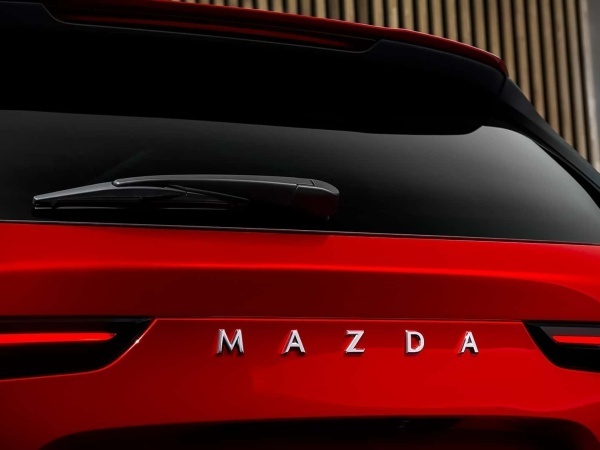
The third-generation Mazda CX-5 debuts in Europe, equipped with the largest central control screen in Mazda's history
MichaelJul 11, 2025
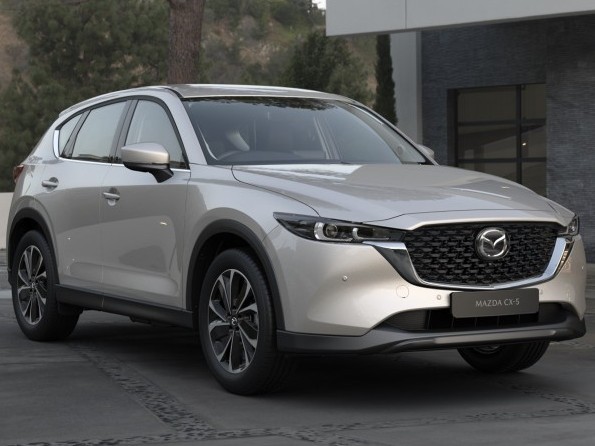
Stunning Looks, Premium Feels: Mazda CX-5's Dual Charm in Detail
AshleyApr 23, 2025
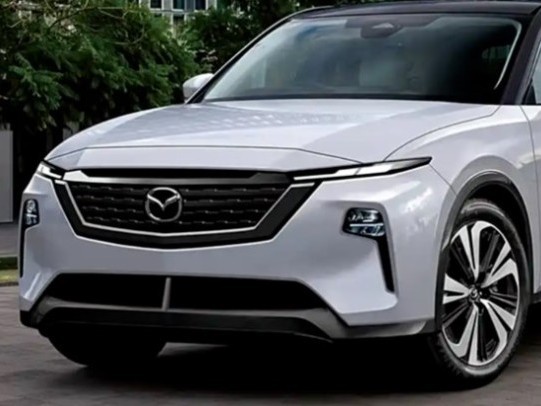
Mazda CX-5 showcased at Thailand Motor Expo 2024, new generation could be released at the Tokyo Auto Show next year
Kevin WongDec 4, 2024
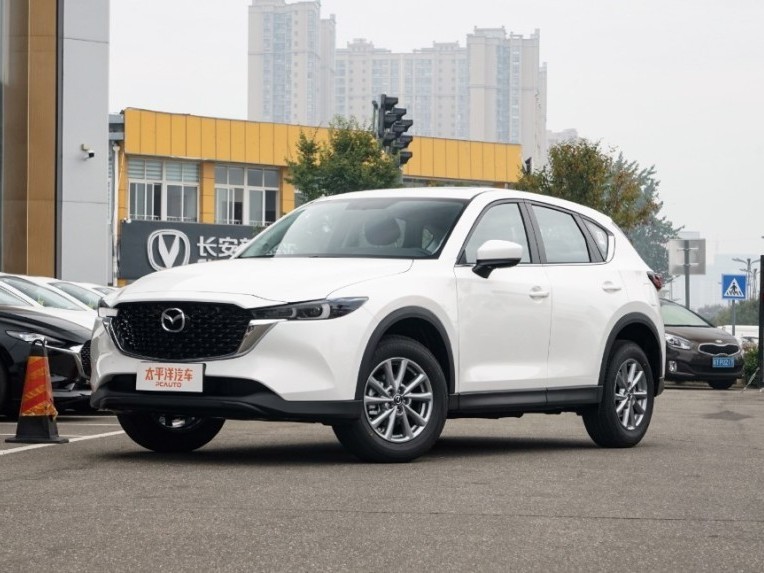
The third generation Mazda CX-5 is expected to debut in 2025! It may be equipped with self-developed hybrid technology!
RobertNov 25, 2024
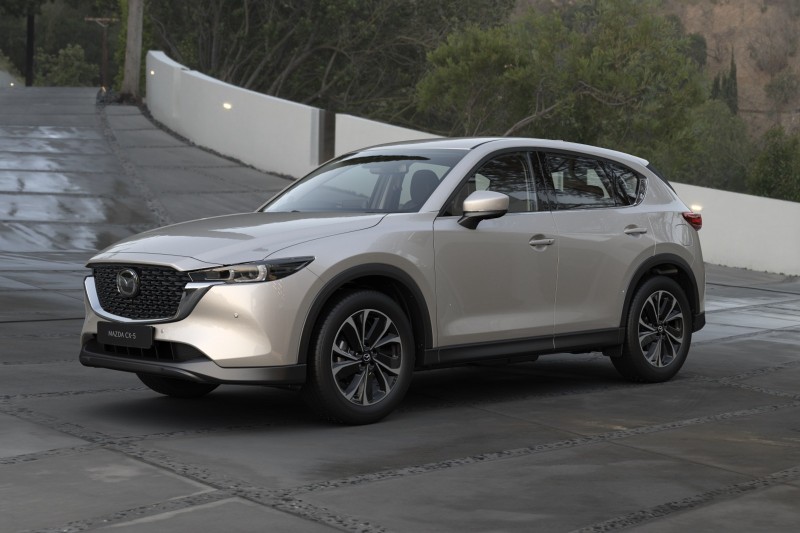
Analysis of the advantages and disadvantages of Mazda CX-5, a SUV that people both love and hate?
LienSep 26, 2024
View More











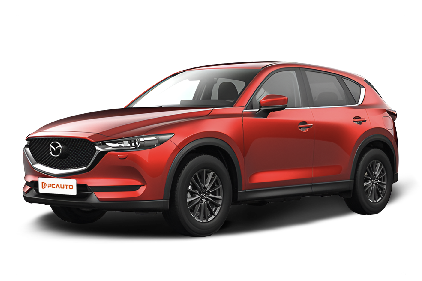

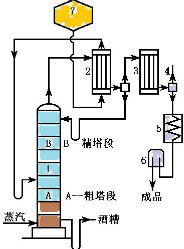



Pros
Cons